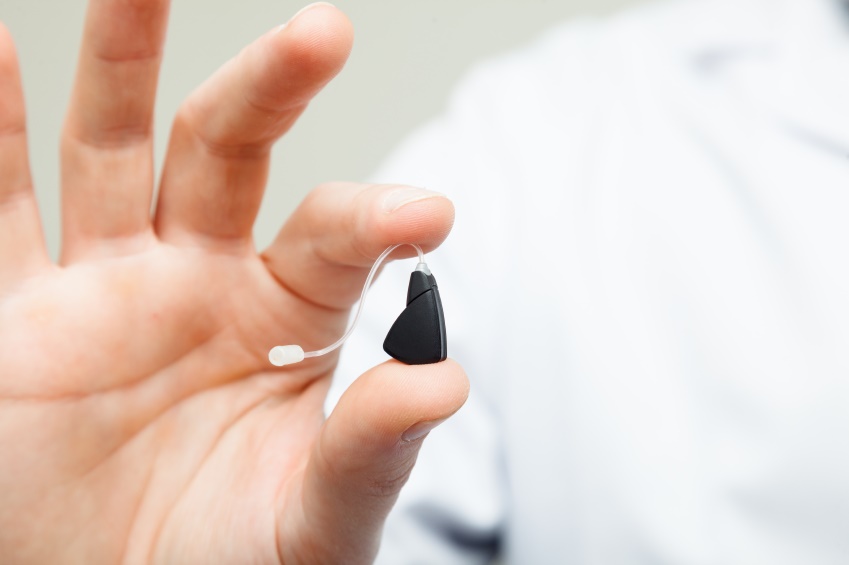
Hearing aid guides are not uncommon, but the majority are not quite reader-friendly, either. Many are simply too lengthy or complex, creating more confusion rather than less.
My guess is that you’re less interested in the physiology of hearing or in the ins and outs of acoustical engineering and a lot more interested in identifying the most appropriate technology at a fair price. Your intent is to hear better, not to read a 10-page manual.
If that describes you, then you’ll appreciate this simple guide to hearing aids. We’ll cover four brief parts, and when we’re finished, you’ll be ready to work with your hearing care professional to discover the technology that’s most appropriate for you. Let’s get started.
How All Digital Hearing Aids Work
Choosing a hearing aid can seem overwhelming—there are several brands and seemingly limitless considerations. But it’s not as complicated as it appears. As you progress through this guide, bear in mind that all digital hearing aids work essentially the same way, and include these four fundamental parts:
- The microphone registers environmental sound and transmits it to the digital processor.
- The digital processor adjusts the sound signal based on the settings programmed by the hearing specialist. The revised sound signal is then delivered to the amplifier.
- The amplifier increases the volume of the sound based on the programmed settings, amplifying only the frequencies the patient has trouble hearing (while suppressing background noise). This signal is next transmitted to the speaker.
- The speaker supplies the enhanced sound to the ear, resulting in louder, clearer sound.
Additionally, all hearing aids include a battery, volume and setting buttons, and remote controls.
Hearing aids really only differ in two crucial ways: 1) style, and 2) advanced features. We’ll address these in the next two sections.
Hearing Aid Styles
You have your choice of three principal styles:
1. Behind-the-ear (BTE) hearing aids hook over the top of the ear and sit behind the ear. The case is then attached to an earmold in the ear canal by a piece of clear tubing. BTE hearing aids are easy to handle and maintain, normally have a longer battery life, and can accommodate severe hearing loss.
2. In-the-ear (ITE) hearing aids occupy the exterior part of the ear with a custom-molded shell. ITE hearing aids are smaller than the behind-the-ear hearing aids but larger than the in-the-canal styles. This renders ITE hearing aids easier to handle than the smaller styles but less visible than the BTE style.
3. In-the-canal (ITC) hearing aids and completely-in-the-canal (CIC) hearing aids fit partially or completely within the ear canal, causing them to be almost or completely invisible. ITC and CIC hearing aids are custom molded to the contours of the ear, and some types can be used for months at a time.
When selecting a style, weigh the tradeoffs among simplicity of use, battery life, and concealment. Your hearing care expert will help you prioritize your preferences and determine the most suitable style.
Hearing Aid Advanced Features and Accessories
Once you’ve selected the right style, you can decide on which of the following features you need—and which you don’t.
- Directional microphones enable you to concentrate on the sounds and conversations directly in front of you while minimizing the diversion of loud background noise.
- Telecoils, or T-coils, allow you to talk on the phone while minimizing the static brought on by background noise.
- Environmental noise control allows you to enhance hearing based upon your environment, for example in a tranquil room at home as opposed to in a lively restaurant.
- Direct input to sound sources such as TVs, radios, computers, and music players allow for clear sound without background noise.
- Wireless connection to mobile phones turns your hearing aids into top quality wireless headphones. The hearing aid settings can be manipulated from your phone (or digital watch), and sound can be wirelessly streamed directly from the phone to the hearing aids.
Optional accessories include cleaning kits, storage cases, ultraviolet sanitizers, battery-changers, and more. Your hearing care professional can help you decide which hearing aid accessories you may need or want.
Selecting the Right Hearing Aids
Before investing in hearing aids, take these four steps:
- Find a reputable, local hearing care professional. Only professionals with sufficient experience can test your hearing properly, which is essential for when it comes time to program, fit, and fine-tune your hearing aids.
- Focus on hearing aid styles and advanced features. Your pick of hearing aids will depend on your preference of style and functionality. Explore these two factors with your hearing expert and your options will come to be manageable.
- Establish a budget. Some would state that your hearing is priceless, but that doesn’t mean you have an unlimited budget. With all of the hearing aid options available to you, you and your hearing professional can uncover the right hearing aid at a reasonable price.
- Test out your new hearing aids. inquire about trial periods and test out your new hearing aids. Talk with your hearing specialist to set realistic expectations and give your hearing aids a chance to show results. Your persistence will be paid back when you realize the difference better hearing will make in your life.
And that’s it. What seems like a complicated process is in fact easily workable, once you know how to prioritize your needs and constrict your choices. With the help of your local hearing care professional, you can obtain the right technology at the right price—so you can start enjoying all of the perks of better hearing.